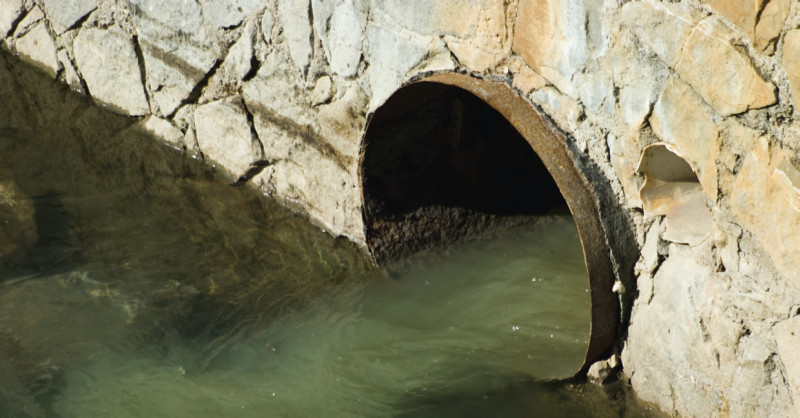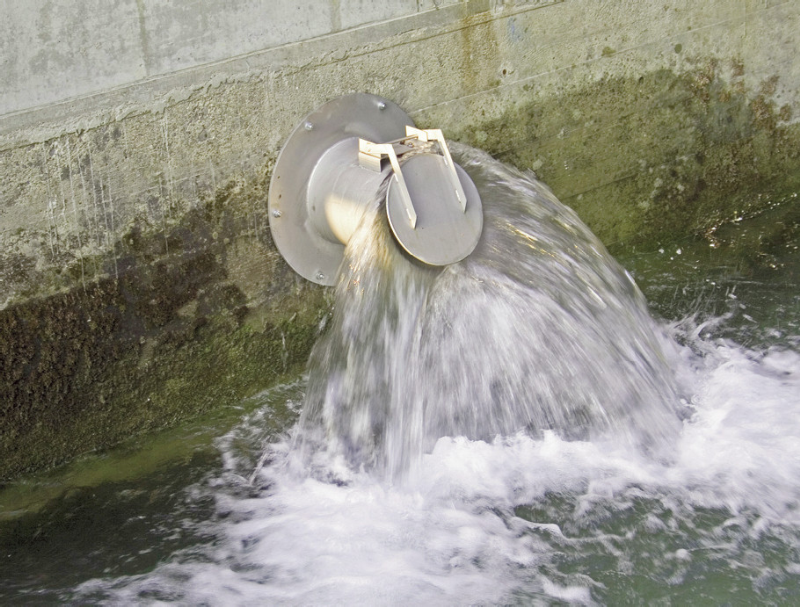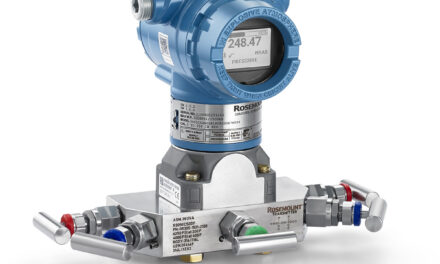 OnSite’s OS8000 multi- sensor meter offers users the opportunity to take a pro-active approach towards drainage asset management and maintenance
OnSite’s OS8000 multi- sensor meter offers users the opportunity to take a pro-active approach towards drainage asset management and maintenance
Out of sight, out of mind” – appears to be a fair representation of what many owners of drains, sewers and process pipelines think, or indeed say, when asked about their underground wastewater assets.
However, an increasing number of commercial and industrial companies are now taking their drainage responsibilities more seriously in a bid to comply with expanding and ever more stringent environmental legislation.
 Today, enforcement agencies have the legislative ‘teeth’ to award fines and sanctions that are a real deterrent to polluters. The Environment Agency’s website shows an increasing number of pollution-related prosecutions, including a cheese company (£20,000), a vegetable oil processor (£14,427), and a water company (£125,000). The European Environmental Directive 2004/35/EC qualifies that sanctions are based on a ‘polluter pays’ principle, which can result in unlimited fines or two years’ imprisonment if you fall foul of the legislation.
Today, enforcement agencies have the legislative ‘teeth’ to award fines and sanctions that are a real deterrent to polluters. The Environment Agency’s website shows an increasing number of pollution-related prosecutions, including a cheese company (£20,000), a vegetable oil processor (£14,427), and a water company (£125,000). The European Environmental Directive 2004/35/EC qualifies that sanctions are based on a ‘polluter pays’ principle, which can result in unlimited fines or two years’ imprisonment if you fall foul of the legislation.
More and more organisations are looking to comply with the Environment Agency’s Pollution Prevention Guidelines. The so-called ‘PPG’s’ detail the legal responsibilities and good environmental practices you should adopt to reduce environmental risks from your business activities and avoid fines, clean up costs and production losses.
Subsurface pipes are subject to numerous issues that can reduce efficiency, cause operational deficiency and leakage, as well as ultimately cause malfunction or failure. These include:
- Ageing networks suffering from neglect and under-investment that are subject to deterioration and damage
- Increased demand/loading due to climate change and increasing frequency of extreme weather, coupled with reduced natural drainage, leading to hydraulic inadequacy.
- Reduced performance due to siltation and other blockages.
- Impact upon sewers through changing lifestyles, for example; the increase in food disposal, fats, oils and greases.
Drainage asset owners are now answerable to numerous stakeholders, including political, public, Environment Agency and regulatory, so they really should know what condition their wastewater system is in and how it is performing.
Dr Steve Ovington from OnSite Central, a company specialising in protecting wastewater assets, said: “A growing number of more progressive asset owners understand that a pro-active approach towards drainage assets is needed if they are to improve efficiency and ultimately avoid the fines and damning publicity that has struck an increasing number of manufacturers in the sector.”
He added: “Within the various process industries, managers are tasked with the ongoing serviceability of such assets, whilst the operators’ executives are charged with maintaining compliance with environmental legislation.”
Russ Wilkes who heads up Flow Management for OnSite, believes that developments in technology for data monitoring and measurement combined with GPRS telemetry gives companies the opportunity to proactively manage their drainage assets.
“Obtaining timelier, accurate data – without increasing costs – is now readily available,” said Wilkes, “And with the internet, the end-user has a dedicated future-proofed platform – with no need to invest in expensive user-licenses.”
OnSite’s OS8000 ATEX-certified meter is a multi-sensor unit which measures accurate real-time data on a variety of key parameters including but not limited to; flow, depth, velocity, temperature, chemicals.
It is clearly beneficial for a centralised Maintenance Manager or control centre to be able to view a complete picture of what’s happening within drainage assets across a number of sites, rather than go out and visit them all, or have to communicate with site operatives at numerous geographic locations.
The OS8000 meter helps maintenance managers handle their assets in an automated 4 stage process:
- Measure: data is transmitted wirelessly at regular intervals to a secure web based platform which can be combined with rainfall information.
- Monitor: The web-based data management platform receives and analyses all data captured remotely.
- Predict: Built-in smart technology analyses historic data and predicts future asset behaviour under varying system conditions.
- Alert: System generates automated user warnings (sent directly to their mobile phones and/or email addresses) as events develop, allowing timely intervention and implementation of preventative measures.
Ovington concluded: “At OnSite we are now seeing a trend whereby… customers are looking to develop smart solutions for the dynamic and pro-active management/maintenance of their drainage assets. The best way forward is to introduce services tailored to match the needs and stage of maturity of your company’s wastewater asset management plans.”
OnSite


